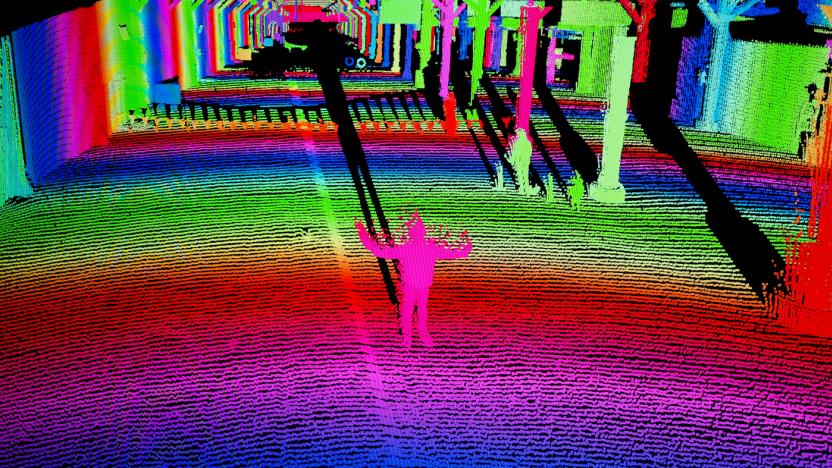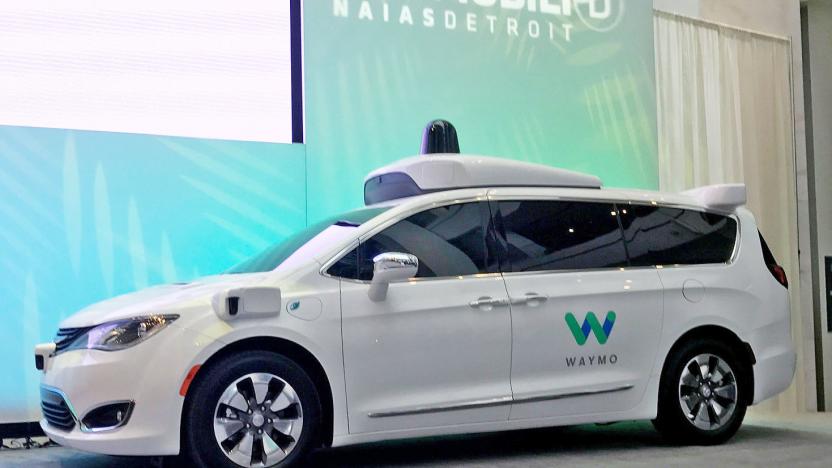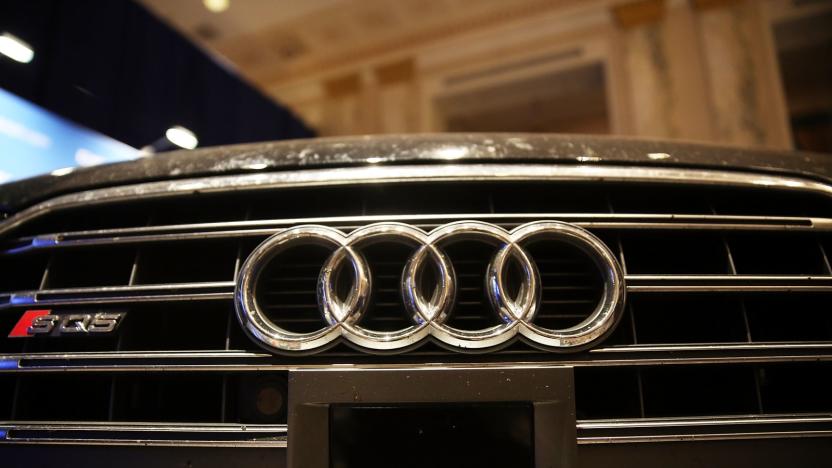TL17LIDR
Latest

The promise of self-driving cars starts with better 'eye-sight'
San Francisco's Pier 35 usually hosts cruise ship guests boarding and unboarding their giant floating hotels. It's a cavernous building hundreds of meters long which actually makes it the perfect indoor facility for demoing what 22 year-old Luminar CEO Austin Russell hopes is the future of LiDAR. The company has developed a higher-quality laser sensor that just might make it the darling of the autonomous car world.

Waymo built a full sensor suite for its self-driving minivans
Last month, Google's newly-renamed self-driving division Waymo unveiled its newest test model, the Chrysler Pacifica. Today, during the North American Auto Show's Automobili-D conference, the CEO John Krafcik revealed that it built a full sensor suite expressly for its autonomous minivans. Not only did the company's extensive R&D lead them to create entirely new LiDAR sensors, but also cut down the expense of individual sensors, which will likely drive down the cost of sensor setups across the autonomous driving industry.

Delphi's autonomous system will be available to automakers in 2019
Automotive supplier Delphi has made a of a habit of showing off its self-driving and other research vehicles at CES in recent years, and 2017 is no different. Except now it's ready to commit to a 2019 launch date for its self-driving suite for automakers. I got to take a ride in a specially outfitted Audi on the streets of Las Vegas and walked away impressed.

Auto supplier wants to make LiDAR cheaper for automakers
Infineon announced on Monday that it is buying Innoluce BV, a Dutch company that manufactures teensy LiDAR modules, in hopes of using the technology to bring self-driving car technology into the mainstream. "We intend to make lidar an affordable feature for every new-built car worldwide," Peter Schiefer, the head of Infineon's automotive division, said in a statement.

See London through the eyes of a self-driving car
When a driverless car glides down the street, avoiding pedestrians and stopping at traffic lights, what exactly does it see? Is the machine's perspective of the world so different to you and me? To give us an inside look, ScanLAB Projects strapped a laser scanner to a Honda CR-V and cruised through the streets of London. Although the car was being driven by a human, the LIDAR (light detection and ranging) equipment performed similarly to how it would in a driverless car. Like radar or sonar, this involves firing a laser in every direction and then measuring the time it takes to reflect back off nearby objects. These timings are then collected, analyzed and collected again to give the car a real-time picture of its surroundings. ScanLAB Projects is a London design company that uses the technology for art and visualisation purposes; they've already scanned museums, an underground railway line and the arctic circle. Its latest video -- produced for the New York Times Magazine -- combines the LIDAR recordings from the drive for a beautiful, eery look at the city.

Self-driving cars can be fooled by fake signals
You'd think that self-driving cars would be most vulnerable to remote hacks, but the biggest danger may come from someone nearby with a handful of cheap electronics. Security researcher Jonathan Petit has determined that you can fool LIDAR (the laser ranging common on autonomous vehicles) by sending "echoes" of fake cars and other objects through laser pulses. All you need is a low-power laser, a basic computing device (an Arduino kit or Raspberry Pi is enough) and the right timing -- you don't even need good aim. Petit managed to spoof objects from as far as 330 feet away in his proof-of-concept attack, and he notes that it's possible to present multiple copies of these imaginary objects or make them move. In other words, it'd only take one prankster to make a self-driving car swerve or stop to avoid a non-existent threat.

This little laser could be the key to inexpensive self-driving cars
To listen to the Googles and the Elon Musks of the world is to believe that one day soon, we'll be tooting down in the highway in cars that control themselves. Those cars will need eyes, though, and that's where a company called Velodyne Acoustics comes in -- it whipped up the Puck, a scaled down version of the laser scanning tech that helps Google's self-driving cars see (which they also make) that only costs about a tenth of the price. Not up on the market rates for portable LiDAR arrays? Let's put it in perspective: the units Google use cost around $75,000. This new model? Just a shade under $8,000. That old cliché about getting what you pay for still holds true here, though -- this cheapo LiDAR array only has 16 lasers with which it scans the world, down from the 64 seen in higher-end units. As a result we're looking at a pretty staggering dip in the sheer number of environmental data points, but the unit's smaller size and price tag just might mean big things for car companies trying to craft the first truly affordable wave of autonomous cars.





